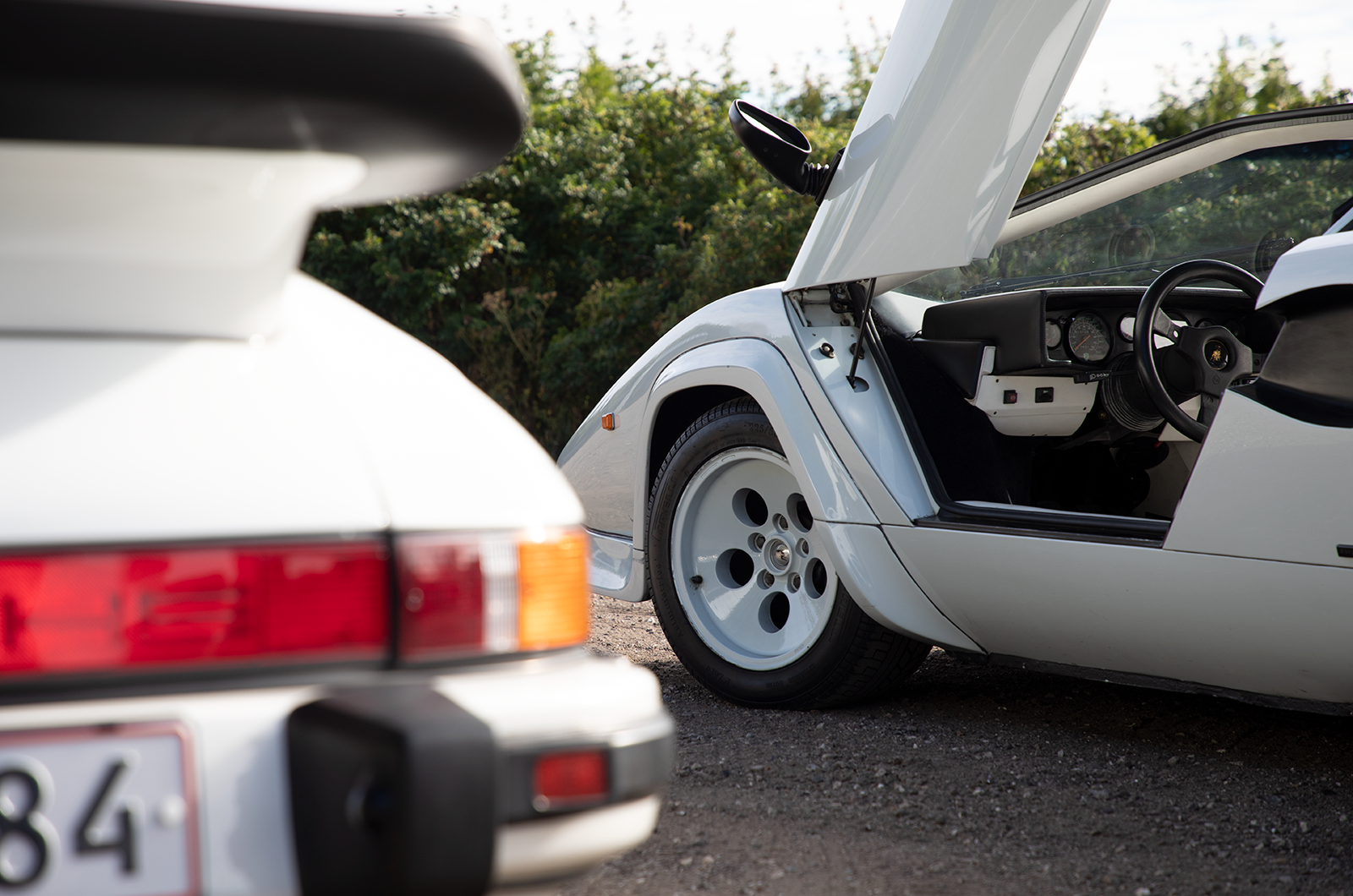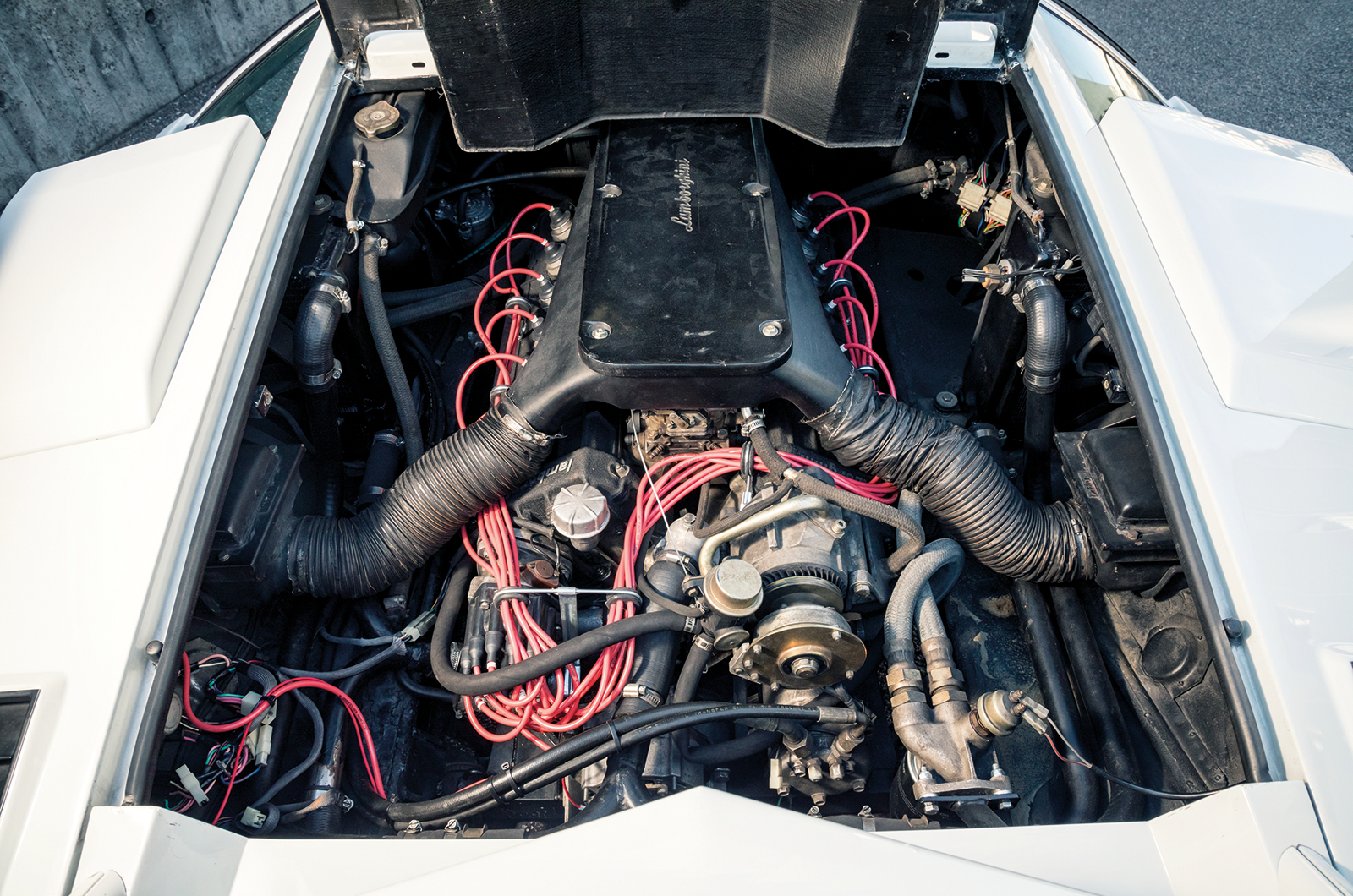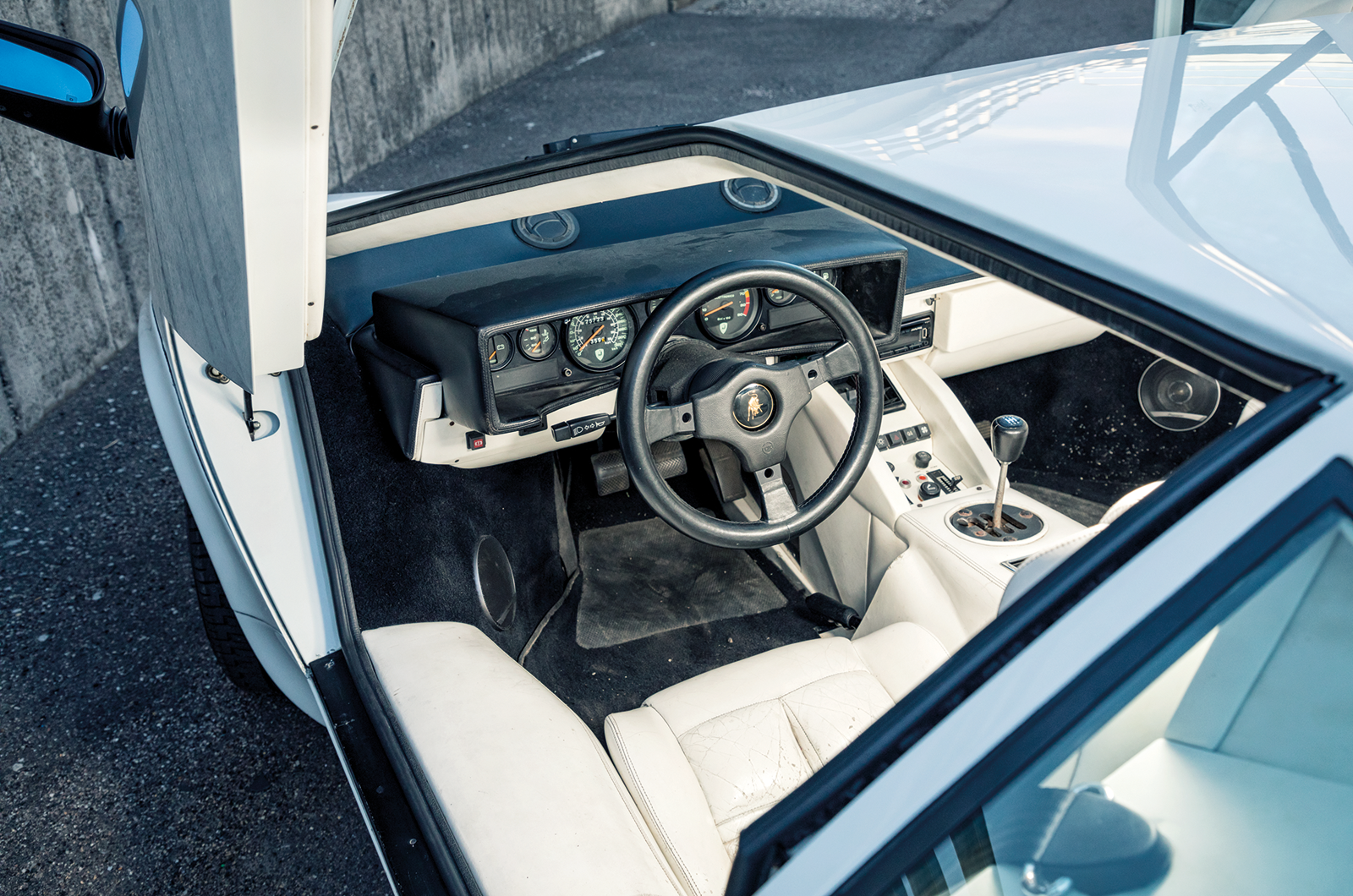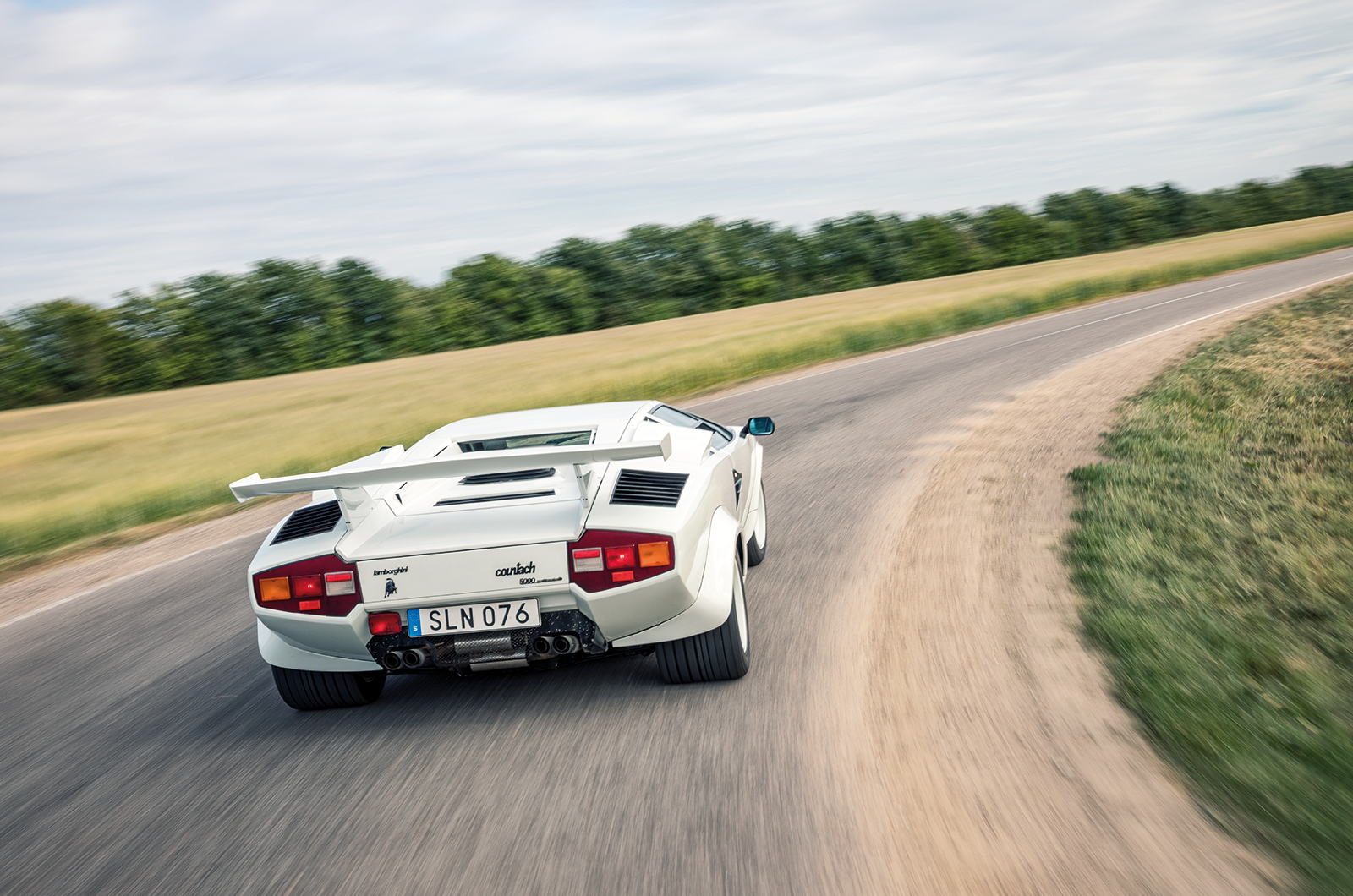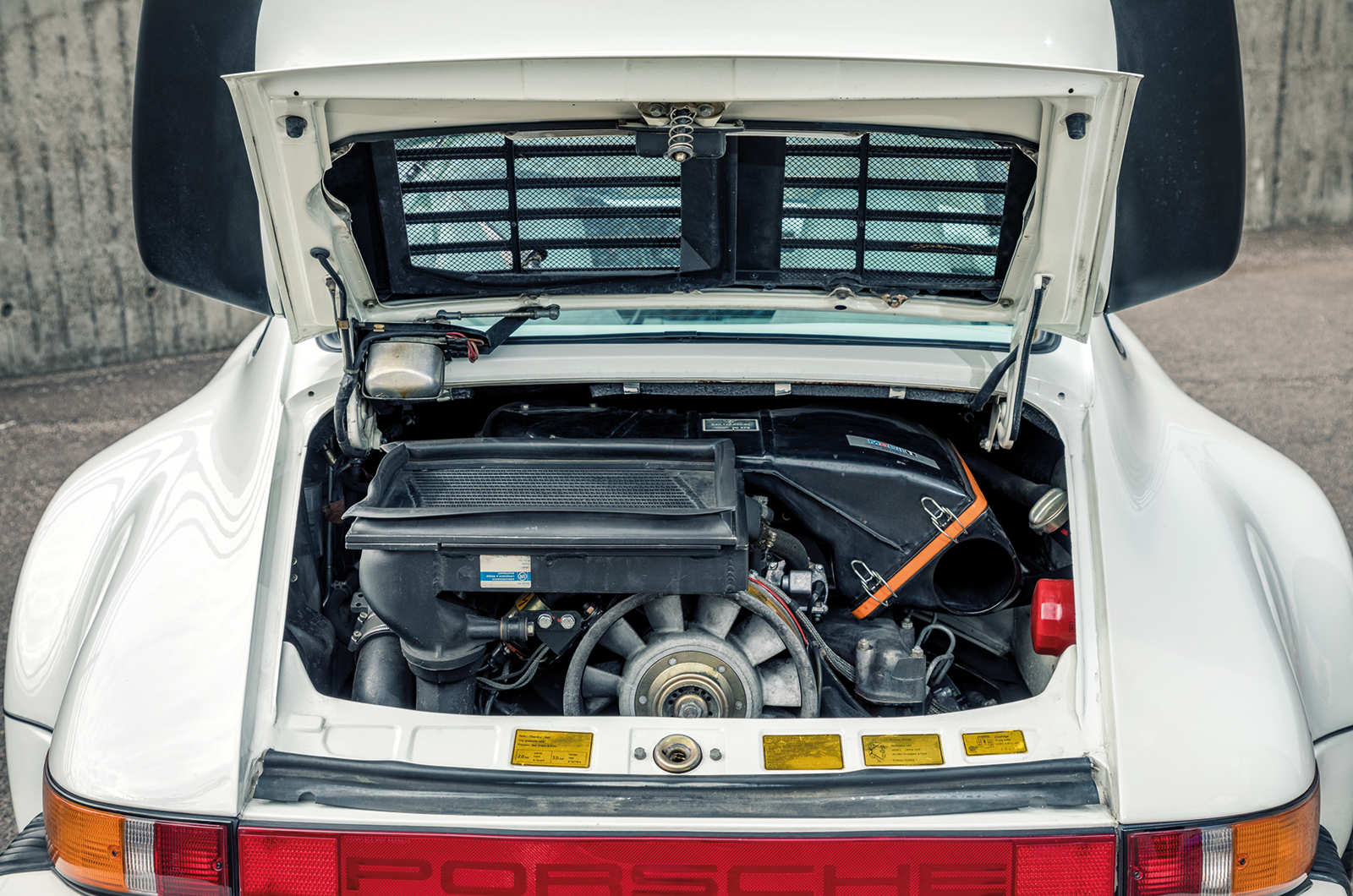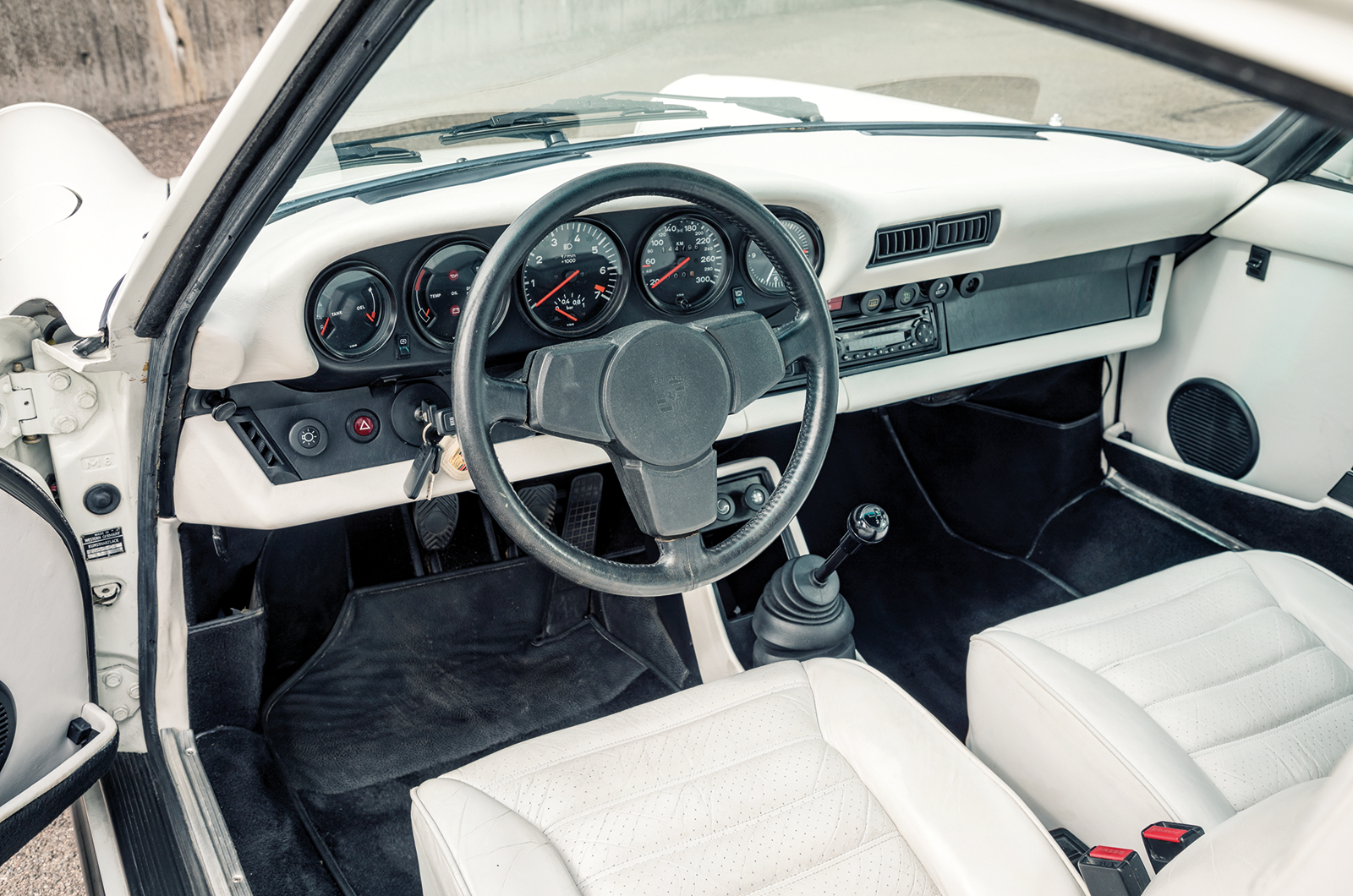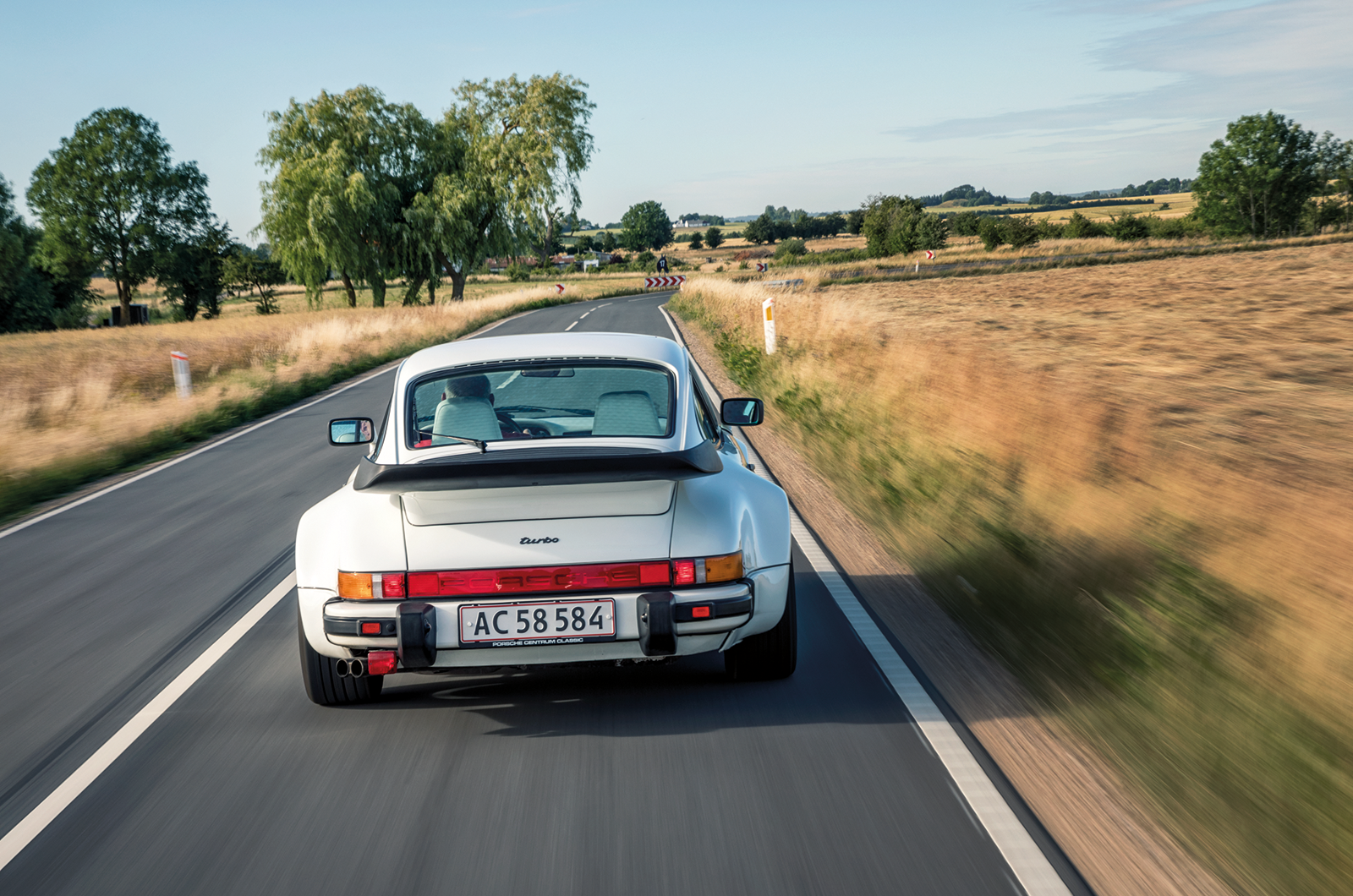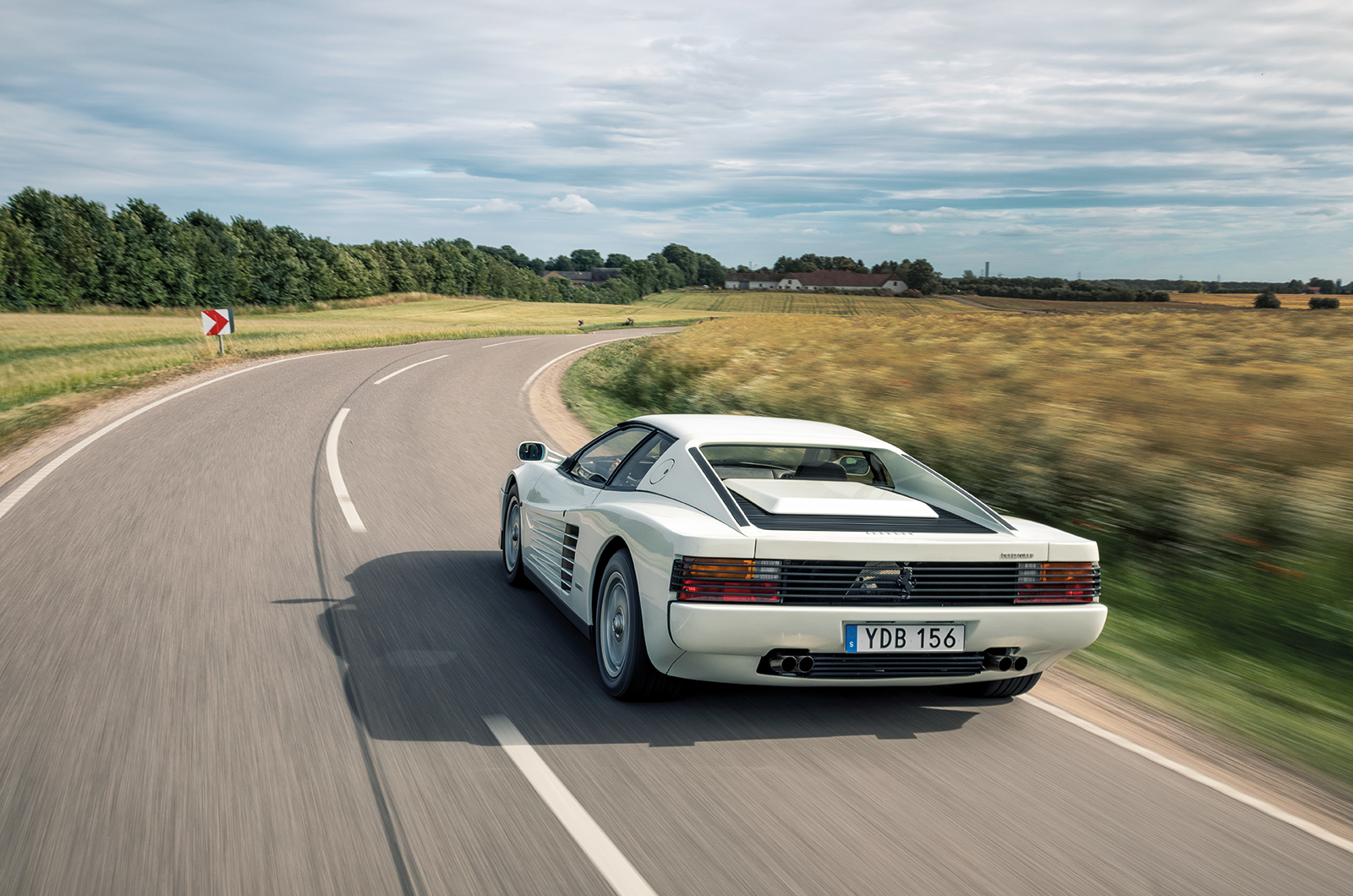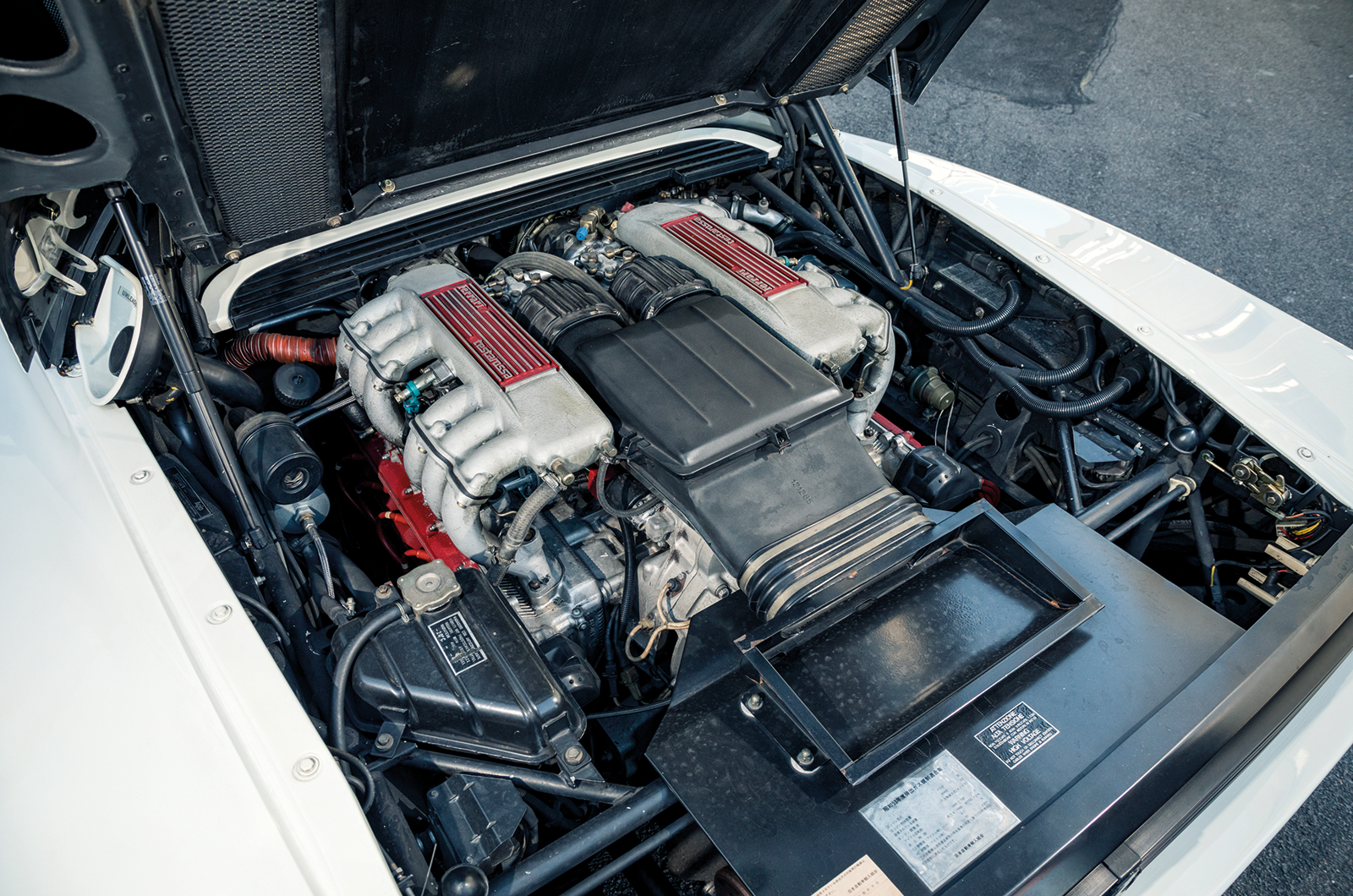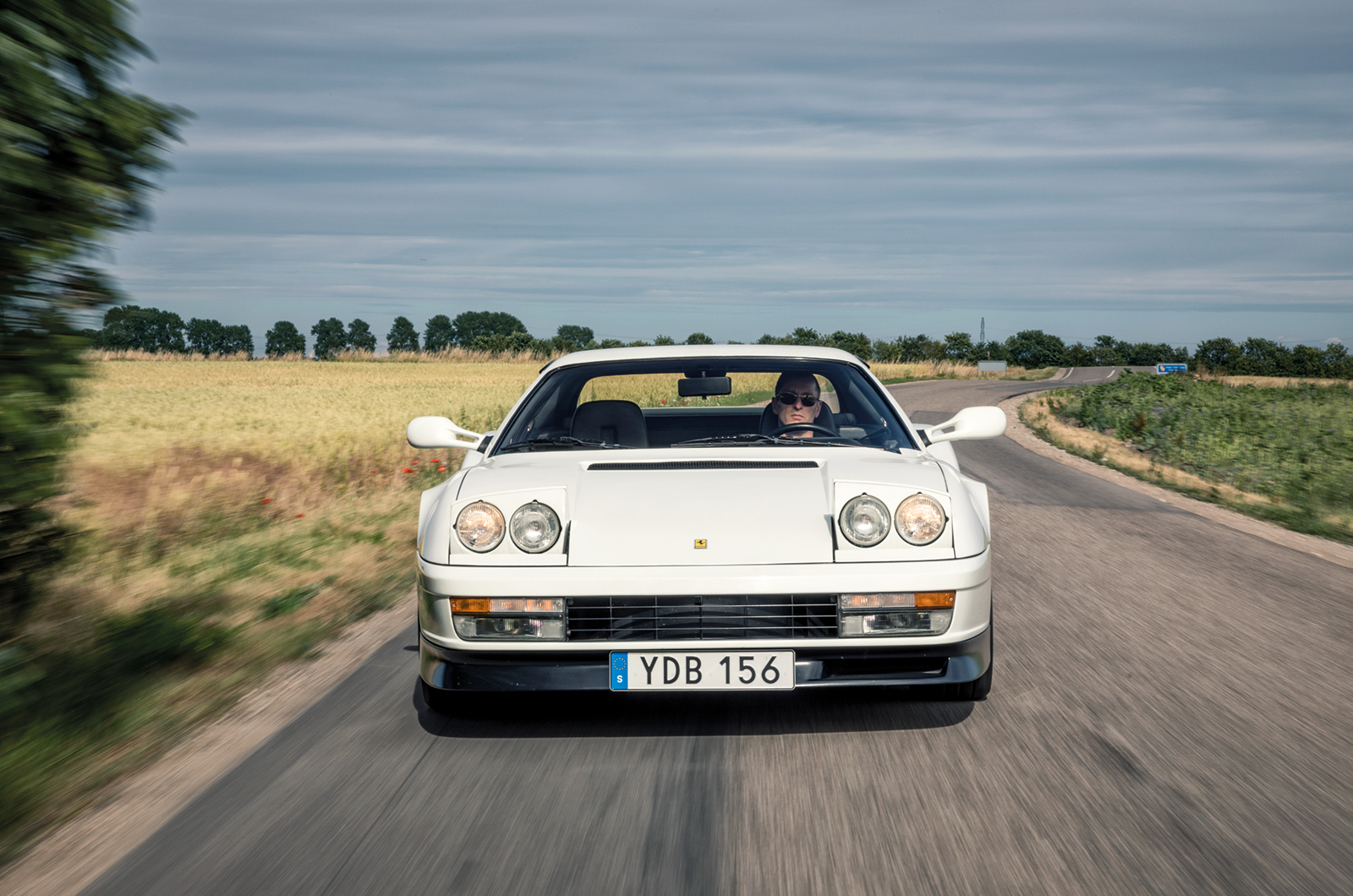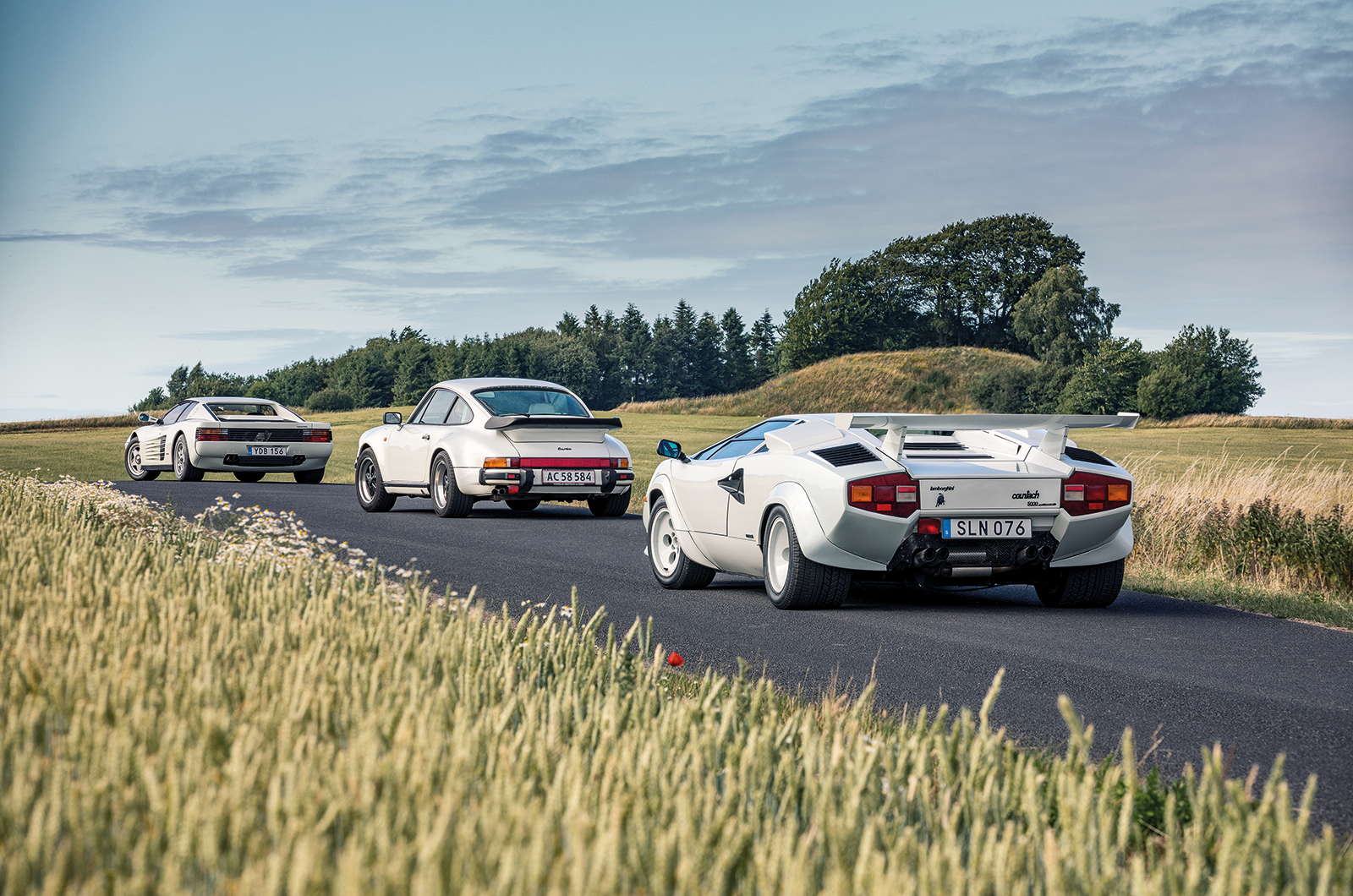The broad, brash Modenese design is a decade younger than its rivals, and this is reflected in the cabin, which has such modern conveniences as a brightly lit digital display to indicate the outside air temperature.
The central tunnel is narrow, so a small extension is needed to accommodate the gearlever, with its beautiful polished open gate, but it’s easier to work than that of the Countach.
It does still suffer the traditional Ferrari trait of a recalcitrant second gear until the oil is properly warmed, but that’s just how it should be.
It’s not practically perfect, however: the driving position – like the Lamborghini’s – is of the ‘gorilla’ type, so when the distance to the pedals is ideal, you’re having to stretch uncomfortably for the steering wheel.
At least the helm isn’t heavy, even without power assistance, and the view through the large windscreen and side windows is unrestricted.
The same can’t be said out the back, where it is only marginally better than the Countach, though the large door mirrors do help. Post-’87 cars got two of them, replacing the distinctive, high-mounted ‘flying mirror’ of early examples.
The 390bhp Testarossa was one of the first models to truly open Ferrari’s eyes to how much money there was to be made from the right kind of road cars.
To drive it remained a challenge, yet straight-line stability was good even without a rear spoiler, and the mid-mounted engine ensured excellent balance in the twisty stuff.
And the engine itself had been refined to near perfection.
Essentially a flattened V12, with 180º between banks of cylinders, for the Testarossa it was enlarged to 4942cc with a dry sump and four valves per cylinder beneath the red-headed cam covers that gave the car its name.
But the way the Testarossa drove was only one part of its success; at least as important was the way it looked.
Technically it was an evolution of the feisty but flawed 512 Berlinetta Boxer, even if the final design bore little resemblance to its curvaceous predecessor.
The softened wedge shape was enlivened by genius strokes from Pininfarina under the direction of Leonardo Fioravanti, with the tail-lights concealed behind grilles and the large side intakes turned into design statements courtesy of bold strakes that channelled fresh air into the greedy flat-12.
In truth, the way the narrow, pointed and compact frontal area opened out along high wing tops to a dramatically wide tail caused some aerodynamic anomalies, resulting in the side windows being pulled away from the car when speeds passed 150mph.
Few of the 7177 owners who invested in a Testarossa would have experienced such speeds, however.
Instead, they and everyone watching could simply soak up the distinctive blend of detail and proportion that combined to make it one of the most successful Ferrari road cars to date.
The1991 demise of the ‘redhead’ coincided with the arrival of legendary Ferrari presidente Luca Cordero di Montezemolo, whose mission became to spread the Testarossa’s populist appeal throughout the Prancing Horse range.
As such it’s a car with a significance that in many ways far exceeds its reputation in both Ferrari history and the supercar hall of fame.
Blending the raw appeal of a Countach with some of the Porsche’s usability, it’s a choice that can be made with head and heart.
And, as the world reignites its dormant love affair with white cars, it’s time this alabaster horse lost its associations with vice – and indeed Miami Vice – to take its place among the supercar elite.
Images: Søren Juul
Factfiles
Lamborghini Countach 5000 qv
- Sold/number built 1985-’88/618 (plus 321 LP500Ss, 1982-’85)
- Construction tubular steel spaceframe, aluminium body with glassfibre wheelarch extensions and Kevlar bonnet
- Engine all-alloy, dohc-per-bank 5167cc V12, six Weber 44DCNF carbs (Bosch KE-Jetronic in US)
- Max power 455bhp @ 7000rpm
- Max torque 369lb ft @ 5200rpm
- Transmission five-speed manual, RWD
- Suspension independent, by double wishbones, coil springs, telescopic dampers, anti-roll bar f/r
- Steering rack and pinion
- Brakes ventilated discs, with servo
- Length 13ft 7in (4140mm)
- Width 6ft 2in (1880mm)
- Height 3ft 6in (1067mm)
- Wheelbase 8ft 2in (2489mm)
- Weight 3284lb (1490kg)
- 0-60mph 4.9 secs
- Top speed 178mph
- Mpg 14.6
- Price new £49,500
- Price now £250-360,000*
Porsche 911 (930) turbo
- Sold/number built 1974-’89/21,589 (all)
- Construction steel monocoque
- Engine all-aluminium, sohc-per bank, air-cooled 3299cc flat-six, Bosch K-Jetronic fuel injection
- Max power 300bhp @ 5500rpm
- Max torque 304lb ft @ 4000rpm
- Transmission four-speed manual, RWD
- Suspension independent all round, at front by struts, lower wishbones, torsion bars rear semi-trailing arms, transverse torsion bars; telescopic dampers, anti-roll bar f/r
- Steering rack and pinion
- Brakes ventilated and drilled discs
- Length 14ft 1in (4291mm)
- Width 5ft 9in (1775mm)
- Height 4ft 3in (1310mm)
- Wheelbase 7ft 5in (2272mm)
- Weight 2866lb (1300kg)
- 0-60mph 5.4 secs
- Top speed 161mph
- Mpg 20
- Price new £24,499
- Price now £60-120,000*
Ferrari Testarossa
- Sold/number built 1984-’92/7177
- Construction tubular steel chassis, aluminium body with steel roof and doors
- Engine all-alloy, dohc-per-bank, 48-valve 4942cc flat-12, Bosch K-Jetronic injection
- Max power 390bhp @ 6300rpm
- Max torque 361lb ft @ 4500rpm
- Transmission five-speed manual, RWD
- Suspension independent, by double wishbones, coil springs, telescopic dampers, anti-roll bar f/r
- Steering rack and pinion
- Brakes ventilated discs
- Length 14ft 8½in (4485mm)
- Width 6ft 6in (1976mm)
- Height 3ft 8½in (1206mm)
- Wheelbase 8ft 4in (2550mm)
- Weight 3320lb (1506kg)
- 0-60mph 5.8secs
- Top speed 180mph
- Mpg 14
- Price new £62,666
- Price now £70-130,000*
*Prices correct at date of original publication
READ MORE
Lamborghini Miura: The Italian Job reloaded
8 £10k Porsches that will have you raiding your piggy bank
Extreme machine: the inside story of the Ferrari F40

